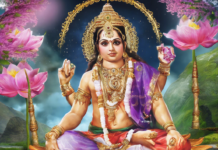Tamil folk songs are a rich repository of cultural heritage that has been passed down through generations. The essence of Tamil culture, ethos, and values are encapsulated in these traditional tunes, reflecting the joys, sorrows, struggles, and triumphs of the Tamil people. Let us delve into the world of Tamil folk songs, exploring their history, themes, variations, and significance in the socio-cultural fabric of Tamil Nadu and beyond.
History of Tamil Folk Songs
Tamil Nadu, a southern state in India, has a vibrant tradition of folk music that dates back centuries. The origins of Tamil folk songs can be traced to the Sangam period, an ancient era known for its literary works and artistic endeavors. These songs were sung by ordinary people, often in rural settings, and revolved around everyday life, nature, love, and devotion.
Over the years, Tamil folk songs have evolved, incorporating influences from various cultures, regions, and communities. They have retained their traditional elements while also adapting to modern sensibilities, making them relevant to contemporary audiences. Today, Tamil folk songs are performed on various occasions, including festivals, weddings, and cultural events, keeping the heritage alive and thriving.
Themes in Tamil Folk Songs
Tamil folk songs encompass a wide range of themes, each reflecting a different aspect of life and culture. Some common themes found in Tamil folk songs include:
Love and Romance
Love is a recurring theme in Tamil folk songs, celebrating the beauty of relationships and the emotions that bind people together. These songs often express the joys of love, the pain of separation, and the longing for a beloved.
Nature and Environment
Nature holds a special place in Tamil culture, and folk songs often pay tribute to its beauty and bounty. These songs describe the flora, fauna, landscapes, and seasons, portraying a deep connection between humans and the natural world.
Social Issues
Tamil folk songs also serve as a medium to address social issues such as caste discrimination, gender inequality, poverty, and injustice. They highlight the struggles of the marginalized communities and advocate for social change and equality.
Mythology and Religion
Religious and mythological themes are prevalent in Tamil folk songs, narrating the tales of gods, goddesses, and mythological figures. These songs are often sung during religious festivals and rituals, invoking divine blessings and protection.
Variations of Tamil Folk Songs
Tamil folk songs come in various forms and styles, each with its unique characteristics and regional variations. Some popular types of Tamil folk songs include:
Kummi and Kolattam
Kummi and Kolattam are traditional group dance forms accompanied by rhythmic songs. These lively performances involve clapping, hand movements, and intricate footwork, symbolizing unity, harmony, and celebration.
Oyilattam
Oyilattam is a dynamic folk dance that originated in Tamil Nadu. Dancers perform intricate steps and formations to the beat of drums and other traditional instruments, creating a visual spectacle that mesmerizes the audience.
Villupattu
Villupattu is a storytelling art form where singers narrate tales from epics, folklore, and history in a musical manner. The performers use song, dialogue, and drama to engage the listeners and bring the stories to life.
Naattupura Padal
Naattupura Padal are rustic songs sung in rural settings, reflecting the agrarian lifestyle, traditions, and culture of Tamil Nadu. These songs capture the essence of village life, showcasing the simplicity, vibrancy, and community spirit of rural communities.
Significance of Tamil Folk Songs
Tamil folk songs play a pivotal role in preserving and promoting the cultural heritage of Tamil Nadu. They serve as a medium of oral history, transmitting stories, values, and traditions from one generation to another. These songs foster a sense of belonging and identity among the Tamil people, strengthening cultural bonds and fostering unity.
Moreover, Tamil folk songs are a form of artistic expression that transcends linguistic, regional, and social barriers. They have the power to evoke emotions, provoke thoughts, and stir the soul, creating a profound impact on the listeners. By preserving and showcasing Tamil folk songs, we not only celebrate the past but also pave the way for a vibrant cultural future.
In conclusion, Tamil folk songs are not just melodies; they are a cultural treasure that embodies the essence of Tamil Nadu’s heritage and legacy. This rich tapestry of music, dance, storytelling, and traditions is a testament to the resilience, creativity, and diversity of the Tamil people. By exploring and cherishing Tamil folk songs, we embark on a journey of discovery, enlightenment, and appreciation of a cultural legacy that continues to inspire and enchant us.
Frequently Asked Questions (FAQs)
-
Are Tamil folk songs only sung in Tamil Nadu?
Tamil folk songs are primarily associated with Tamil Nadu, but they are also performed in other regions with Tamil diaspora communities, preserving the cultural heritage beyond the state borders. -
How can one learn more about Tamil folk songs and their meanings?
Various resources such as books, documentaries, cultural events, and online platforms offer insights into Tamil folk songs, their themes, variations, and significance. -
Are there modern adaptations of Tamil folk songs in contemporary music?
Yes, many musicians and artists have reinterpreted traditional Tamil folk songs in modern genres, infusing new elements while retaining the essence of the original tunes. -
Do Tamil folk songs have any influence on popular culture in India?
Tamil folk songs have influenced various forms of popular culture in India, including movies, music, dance, and literature, showcasing their enduring appeal and relevance. -
What role do Tamil folk songs play in festivals and celebrations?
Tamil folk songs are an integral part of festivals and celebrations in Tamil Nadu, adding color, joy, and cultural vibrancy to the festivities, uniting people in jubilation and spirit. -
Can non-Tamil speakers appreciate and enjoy Tamil folk songs?
Absolutely! The universal themes, melodious tunes, and emotive performances of Tamil folk songs transcend language barriers, appealing to a diverse audience and touching hearts across cultural divides. -
Are there any efforts to preserve and promote Tamil folk songs for future generations?
Yes, various cultural institutions, organizations, and enthusiasts are working diligently to document, archive, and disseminate Tamil folk songs, ensuring their continuity and legacy for generations to come. -
What impact do globalization and modernization have on the preservation of Tamil folk songs?
While globalization and modernization pose challenges to traditional art forms, they also offer opportunities for wider exposure, collaboration, and innovation, allowing Tamil folk songs to evolve and thrive in a changing world. -
How can individuals contribute to the preservation and promotion of Tamil folk songs?
By attending performances, supporting artists, sharing knowledge, and participating in cultural initiatives, individuals can help in safeguarding and promoting Tamil folk songs, keeping the cultural heritage alive and vibrant. -
What makes Tamil folk songs unique compared to other regional folk music traditions in India?
Tamil folk songs are unique in their lyrical depth, musical intricacy, vibrant performances, and cultural significance, reflecting the distinct ethos, history, and creativity of the Tamil people in a nuanced and captivating manner.









